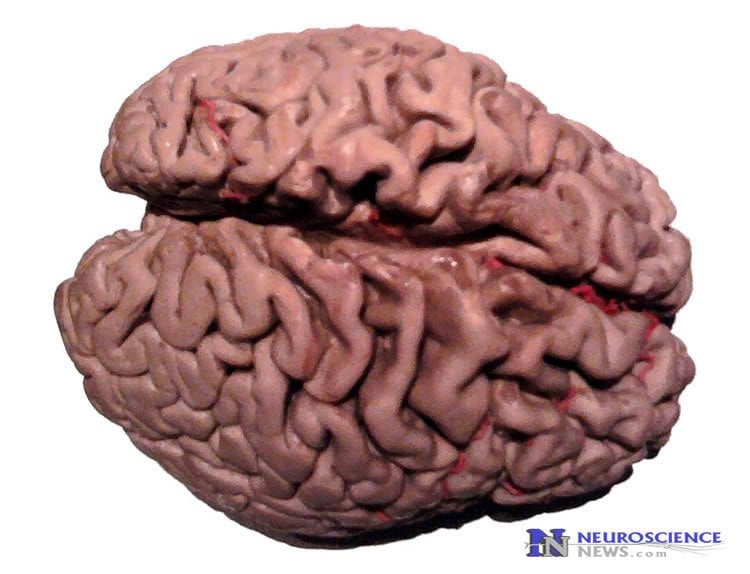Summary: Researchers say stroke prevention strategy is also helping to reduce dementia in people aged 80 and over.
Source: University of Western Ontario.
Ontario’s stroke prevention strategy is also reducing incidence of dementia among people 80+.
Stroke prevention among older Ontarians may also reduce risk of some dementias
Ontario’s stroke prevention strategy appears to have had an unexpected, beneficial side effect: a reduction also in the incidence of dementia among older seniors.
A new paper by researchers at Western University, Lawson Health Research Institute and the Institute for Clinical Evaluative Sciences (ICES) shows there’s been a decade-long drop in new diagnoses of both stroke and dementia in the most at-risk group — those who are 80 or older.
“Some have said we’re on the cusp of an epidemic of dementia as the population ages,” said study author Joshua Cerasuolo, a PhD candidate in epidemiology and biostatistics at Western’s Schulich School of Medicine and Dentistry. “What this data suggests is that by successfully fighting off the risks of stroke – with a healthy diet, exercise, a tobacco-free life and high blood-pressure medication where needed – we can also curtail the incidence of some dementias.
“The take-home message is that we can prevent some dementias by preventing stroke,” Cerasuolo said.
Published in the journal Alzheimer’s & Dementia: The Journal of the Alzheimer’s Association, this is the first study that has looked at the demographics of both stroke and dementia across Ontario since the province pioneered Canada’s first stroke prevention strategy in 2000. That strategy includes more health centres able to manage stroke, more community and physician supports, better use of hypertensive mediation and well-promoted lifestyle changes to reduce risks. Five provinces have stroke strategies and five do not.
“With lifestyle changes, we can reduce our risks of both stroke and some dementias. That’s a pretty powerful one-two punch,” said Dr. Vladimir Hachinski a clinical neuroscientist at Western’s Schulich School of Medicine and Dentistry, a Lawson Health Research Institute scientist and neurologist at London Health Sciences Centre. He is a world pioneer in stroke research and a co-supervisor of the research paper.
Hachinski said more research needs to take place to understand the specific relationships between stroke and dementia but this work suggests there are policy implications where stroke and dementia work can intersect.
“We have systems in place for stroke prevention and our hypothesis is that any studies looking at stroke prevention should also investigate dementia prevention,” Hachinski said. “It’s a good-news story for Ontario and it could be a good-news story elsewhere.”
Most strokes are caused by the restriction or constriction of blood flow to the brain. Vascular dementia also develops as blood supply to the brain is reduced.
Hachinski said someone who has had a stroke is twice as likely to develop dementia. Someone who has had a diagnosis of stroke has also likely had several prior “silent” strokes that may have affected a patient’s cognitive abilities.

The data mining took place using information from ICES, based in Toronto.
Specifically, it shows that the incidence of new stroke diagnosis among highest-risk group, people aged 80-plus, dropped by 37.9 per cent in a span of a little more than a decade. During the same timeframe, the incidence of dementia diagnoses in that age group fell by 15.4 per cent.
“As clinicians and researchers, we are still trying to get a handle on how to reduce a person’s chances of dementia late in life. Some we can’t influence – yet – but here is a pretty clear indication that we can take specific definitive steps to reduce our chances of dementia related to vascular disease,” Hachinski said.
Source: Debora Van Brenk – University of Western Ontario
Image Source: NeuroscienceNews.com image is in the public domain.
Original Research: Full open access research for “Population-based stroke and dementia incidence trends: Age and sex variations” by Joshua O. Cerasuolo, Lauren E. Cipriano, Luciano A. Sposato, Moira K. Kapral, Jiming Fang, Sudeep S. Gill, Daniel G. Hackam, Vladimir Hachinski in Alzehimer’s Disease and Dementia. Published online March 28 2017 doi:10.1016/j.jalz.2017.02.010
[cbtabs][cbtab title=”MLA”]University of Western Ontario “Stroke Prevention May Also Reduce Dementia.” NeuroscienceNews. NeuroscienceNews, 1 May 2017.
<https://neurosciencenews.com/dementia-stroke-prevention-6558/>.[/cbtab][cbtab title=”APA”]University of Western Ontario (2017, May 1). Stroke Prevention May Also Reduce Dementia. NeuroscienceNew. Retrieved May 1, 2017 from https://neurosciencenews.com/dementia-stroke-prevention-6558/[/cbtab][cbtab title=”Chicago”]University of Western Ontario “Stroke Prevention May Also Reduce Dementia.” https://neurosciencenews.com/dementia-stroke-prevention-6558/ (accessed May 1, 2017).[/cbtab][/cbtabs]
Abstract
Population-based stroke and dementia incidence trends: Age and sex variations
Introduction
We discovered a concomitant decline in stroke and dementia incidence rates at a whole population level in Ontario, Canada. This study explores these trends within demographic subgroups.
Methods
We analyzed administrative data sources using validated algorithms to calculate stroke and dementia incidence rates from 2002 to 2013.
Results
For more than 12 years, stroke incidence remained unchanged among those aged 20 to 49 years and decreased for those aged 50 to 64, 65 to 79, and 80+ years by 22.7%, 36.9%, and 37.9%, respectively. Dementia incidence increased by 17.3% and 23.5% in those aged 20 to 49 and 50 to 64 years, respectively, remained unchanged in those aged 65 to 79 years, and decreased by 15.4% in those aged 80+ years.
Discussion
The concomitant decline in stroke and dementia incidence rates may depict how successful stroke prevention has targeted shared risk factors of both conditions, especially at advanced ages where such risk factors are highly prevalent. We lend support for the development of an integrated system of stroke and dementia prevention.
“Population-based stroke and dementia incidence trends: Age and sex variations” by Joshua O. Cerasuolo, Lauren E. Cipriano, Luciano A. Sposato, Moira K. Kapral, Jiming Fang, Sudeep S. Gill, Daniel G. Hackam, Vladimir Hachinski in Alzehimer’s Disease and Dementia. Published online March 28 2017 doi:10.1016/j.jalz.2017.02.010






